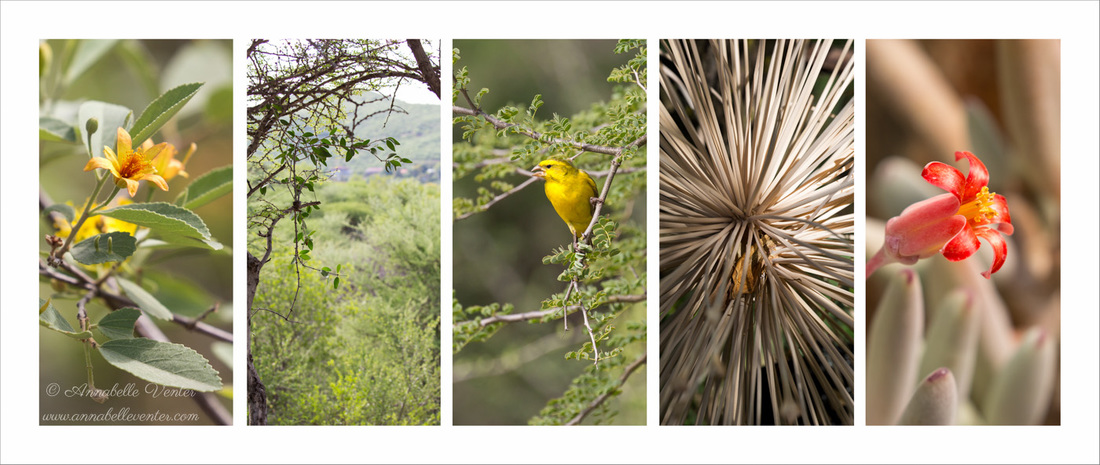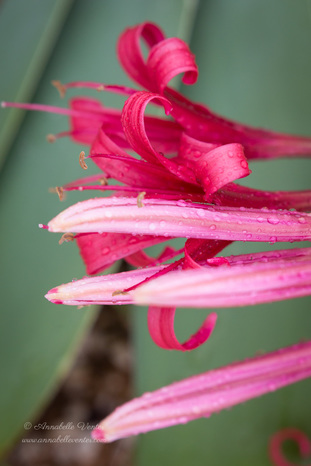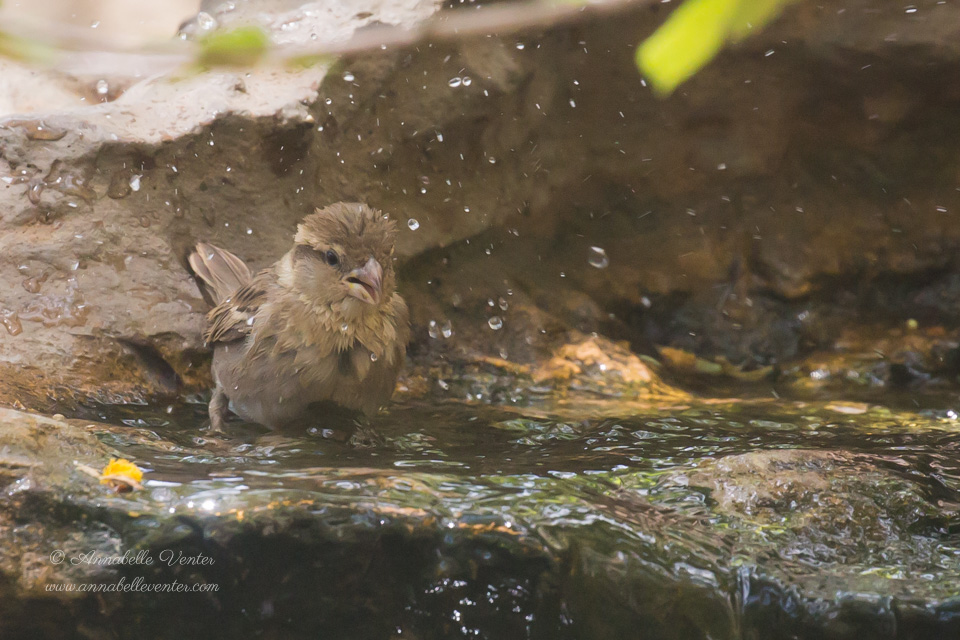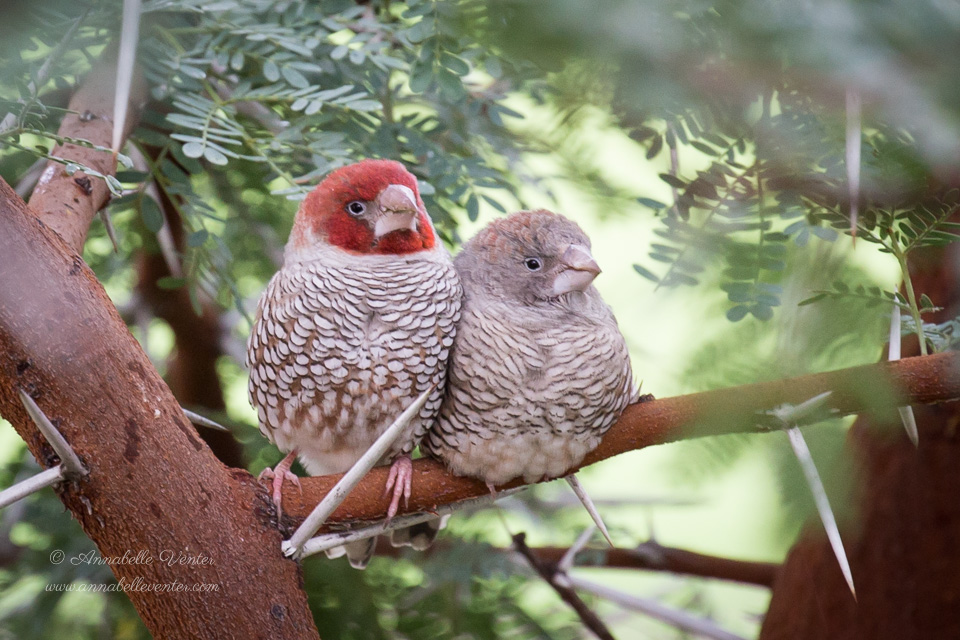|
1 Comment
To tie in with my recent video (below*) about #plantonetree in your garden , no matter how small, here is a link to and article on Namib Trees - an Indigenous Plant Nursery in Windhoek
*https://www.facebook.com/annabelle.venter/videos/3649234425149238/UzpfSTM0NDc1NDQwODkwODMzMjozMDUwODAxODcxNjM2ODky/ www.travelnewsnamibia.com/news/stories/go-local-grow-an-indigenous-forest-in-your-garden/ A wonderful journey to the Okavango river to watch Pels Fishing owls and visit the rock art rich Tsodilo Hills:
www.travelnewsnamibia.com/news/stories/conservation/the-louvre-of-the-desert/ A daily comment from most of us these days is “I don’t have time…..”
Well here it is now – the one thing you never have enough of. A Gift from the Earth. A gift from the Animals. TIME. The Earth is forcing us to pay attention and we’d better listen well. She needs to heal and so do we. How will you will you use this gift? Will you use it wisely and emerge on the other side a better human? Or will you waste it and go back to your old ways? ___________________________________________________________________________________________________________________________________ My isolation plan in preparation for LOCK DOWN Namibia Annabelle Venter 24 MARCH 2020 Windhoek I’ve had three weeks to practice for the pandemic lock down (corona virus/Covid_19) since I had a surgical shoulder procedure and no driving allowed (or possible) I’m sharing what I’ve learnt so far… and I hasten to add that this is as much a memo to myself as it is to assist any reader! I have a long way to go, but for now am happy to accept that I am perfectly imperfect! After the op I embraced the chance to not do pottery for a few weeks and to have the time to figure out the path ahead, since the shoulder issues indicate that the way I’ve been working with clay up till now has significantly attributed to the problem. Naively I thought I’d have my 'light-bulb' moment pretty soon after the op and I would be able to start actively planning my new path. I usually have a stream of innovative and creative ideas so where are they now? I have many interests, passions and skills, but right now, I have time, no inspiration and zero income (and pain). Sound familiar to you? Read on then, this is for you. The first thing is to establish a routine. This is not a vacation. Remember how stiff and unmotivated you felt returning to the gym after an extended holiday? Well let’s just call this maintaining emotional and mental fitness. And when we return to work in a few weeks it won’t be so hard to adjust. The upside is that we might just find a new way to live and work, and become human beings instead of a human doings! This is not really very different to my usual working day in isolation as a creative and one, which as an introvert, I am totally at ease with. I realize this won’t be the case for everyone though. So I make specific times during my day and routine in order to fulfill each or at least most of these tips. Unless you still have to work full time, then try to fit in a different one each day at least.
The world’s future way of functioning is for sure uncertain. But what is to a large extent within our control is the way we personally handle this pandemic and all that goes with it. In reality we only really have this moment now. Embrace this time as the incredible gift that it is, no matter what your circumstances. Connect with your family and care for one another in whatever way you can. Write in your journal and remember to notice and note what you are grateful for, every day. Namaste Annabelle Read about one of our most favourite special places here:
/www.travelnewsnamibia.com/news/botswanas-nxai-pans/ A very special journey to a remote and unspoilt Zambian national park.:
www.travelnewsnamibia.com/uncategorized/busanga-plains/ I wrote for our beautiful travel magazine, Travel News Namibia, for several years.
Here is a recent photographic feature where I share some of my favourite things in Namibia of the past few years, illustrating how I love the variety each season brings. www.travelnewsnamibia.com/featured-stories/photography-feature// In January 2016 I visited the National Botancial Gardens in Windhoek to see what was flowering after some rain that we'd had. It's a dry summer so far and last year's dried out plants still rub shoulders with fresh grasses and delicate little summer flowers.
Enjoy the images of plants I found there. Christmas time in Etosha in the past, was traditionally a quiet time with local Namibians enjoying some well-earned rest. We have often been one of only a handful of cars out on early morning game drives. Up until the mid eighties, Etosha was even closed to visitors during the rainy summer months! But things are changing and the camps are now fully booked out well in advance, with lower summer rates attracting more visitors. This year we arrive in Halali on Christmas afternoon to find the rains have already beaten us to it! What a joy for the animals. This has been a desperately dry year and the game is thin. Overnight the Halali plains are transformed into temporary pans, the game starts returning and mopane trees drip water on your head back in camp. A bat-eared fox family allows us to meet their cub before they pick their way gingerly through the water. 3 baby jackals test their combat skills a little way away from their neighbours. Blue crane pairs have taken up residence to nest again and take turns at sitting on the eggs. A red-necked falcon quietly watches us while keeping a beady eye out for food. With so much water around we almost don’t turn into Rietfontein, but a beautiful surprise awaits us there. The mother leopard I photographed with a tiny cub, 2 Easters ago, is drinking at a pool in the carpark. Sadly her 2 cubs of that year did not survive. But now she looks round and could be pregnant again. I am hoping so anyway, but it’s hard to tell! Back in camp, tiny mopane trees, with just two leaves, push their way towards a long life through the soggy earth. A group of red-billed wood-hoopoes, endemic to Namibia, draw our attention to a nest close-by where they are feeding the youngsters. Halali is known as a good place to see this bird as well as another endemic, the white-crested helmet-shrike. Spending mornings in camp is rewarding if you are a birder. On our second morning we automatically turn west to the Salvadora plains where we hope to spot some old acquaintances. The instant I see the glint of a golden coat on the open plain my heart skips a beat and tells me it’s ‘our’ young leopardess, the older daughter of yesterday’s mum. Sure enough she is hunting today and springbok is on the menu. She’s a very relaxed leopard around cars and people ( and kori bustards!) and uses our vehicle to slink closer to her prey. No one moves as we watch her get to within metres of her meal, but something is not right today and she aborts the hunt. The last damp morning reveals another of those glimpses that makes the heart miss a beat. Three cheetahs line the horizon, near Salvadora. They seem to be hunting but the cackling of hyenas at a den nearby forces them to turn away again. This is a coalition we have not seen before and are keen to find out more about them, but unfortunately it’s time for us to head homewards. The storm clouds are gathering again and rain looks promising for Okaukeujo which is still desperately dry. South of Outjo good rains have fallen and I am in for a last treat, spotting no less than four different types of pink lilies along the roadside. Two are withered and we don’t stop, but my old favourite Crinum buphanoides is as delightful and refreshing as ever. Fields of Ammocharis coranica have me dodging the increasing raindrops but I’m in my happy space and not deterred in the least! The start of summer in Namibia is a magical time and one when we should be out in the bush witnessing the new life bursting out around us. I even saw the first omayovas (giant wild mushrooms) for sale – now that’s a true sign that summer is here! 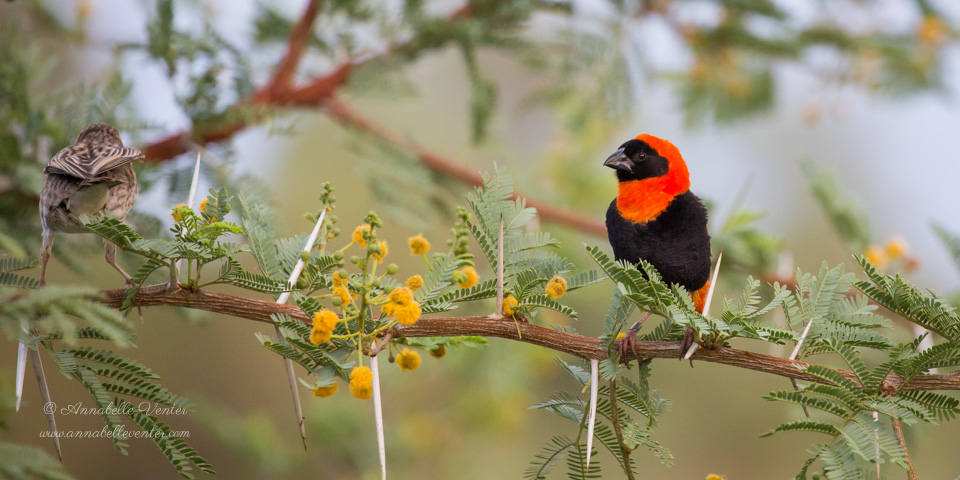 Life in the sweet-thorn | 20 square metres All you really need is one indigenous tree. Preferably a thorn tree. The Acacia karoo we planted 4 ½ years ago has the added advantage of being local – occurring naturally in the river beds around Windhoek. It’s 05h50, a week before Christmas and the sky’s just beginning to lighten. The birds are awake of course and already on their way here. Some live nearby – just around the corner a flock of red-headed finches roosts each night. Others, like the European bee-eaters have travelled far but don’t stop over in our garden. Gardens in the neighbourhood have been ‘cleaned’ of vegetation (I have never understood what is ‘dirty’ about life-giving vegetation, but it’s something of a national obsession here), so the tree and its 20 square metre spread offer a life-line for the small creatures that visit. First to arrive are tiny pale blue and brown fluff-balls, the blue waxbills followed by their cousins the common waxbills, and the odd red-billed quelea (above). Nothing common about them at all, their beautiful red beaks and rumps flash through the tree. Usually just a handful, today they have brought the whole gang along – easily 20 or more. Perhaps it’s family visiting for the holidays? Our sweet-thorn or soetdoring is a riot of yellow fluffy flowers right now and already reaches beyond the top of our second-storey roof. Its strong, wind-proof, spreading crown provides a landing pad for the visitors and now just after six am, the orange and black clowns arrive, some still changing into their summer costumes. I always thought a red bishop was... well red, you know? Intense, juicy-orange feathers and a strange harsh swizzling sound announce these early feeders Yes, we unashamedly admit to feeding the birds, helping them through our desperate winters until the rains fall and soothe over the landscape. With so much natural vegetation destroyed around us (for no reason at all, other than to keep idle folk busy) there is simply nothing for them to eat. A small fountain helps keep the birds alive (and clean). This tiny rock pool uses little water and the birds queue up to splash about. Suddenly a high pitched squeal sends everyone scattering and a male shaft-tailed whydah arrives (below). He’s smaller than most of the others but insists on eating alone. He delights in chasing away the resident southern masked weaver, Geeljan. Geeljan ( below) has been building next door at a frenetic pace since July and must be exhausted, but he never falters and is probably on his 4th or 5th batch of babies for the year by now. While all this is going on and we savour our first coffee of the day, a line of birds emerges out of the northern sky flying directly towards us. The pink light of dawn catches their wings and as they approach the pinkness intensifies by the second. Flamingoes! About 50 of them... Suddenly they veer off to the east and disappear as quickly as they came. While we are still marvelling at these creatures that have probably flown through the night from Walvis Bay, en route to breed in a (hopefully) wetter Botswana, a distinct twittering reaches our ears. European bee-eaters visiting from the northern hemisphere are doing their daily trip across town. Some of these gorgeous birds roost in a friend’s garden on the southern side of town and make the journey each morning before sunrise to their feeding grounds on the northern side of Windhoek. Tonight they’ll be back again as the sun is setting. Red-billed firefinch At about 7am the red-headed finches descend in a huge flock and proceed to take over the food bowl, forcing the doves to wait their turn. And so the jostling goes on all day long. Red-headed finches
Yellow mongoose By mid morning the heat brings out the wasps, bees and beetles that come to feed on and pollinate the tree. This thorn tree has brought wild life back to our neck of the woods and also brought home to us how important it is to provide habitat for these creatures. Unabated construction and destruction in Windhoek is reducing their natural spaces at an alarming rate and it’s up to each of us to plant indigenous, water-wise plants to help out. Just this one tree has brought nature to us in a concrete jungle and I would like to encourage you all to plant just one locally indigenous tree to kick off 2016. All plants in our garden are locally occurring indigenous species and were bought at the National Botanical Research Institute’s nursery in Orban steet. HAPPY HOLIDAYS! Female southern masked weaver
|


